
 An advanced Dry Combat Submersible design from the end of the Cold War, the 3GST9 has a reputation of being a very impressive boat, continuing the Italian tendency to be ten years ahead of everyone else in this field. Its Air Independet Power (AIP) made it a generation ahead of contemporary designs.
An advanced Dry Combat Submersible design from the end of the Cold War, the 3GST9 has a reputation of being a very impressive boat, continuing the Italian tendency to be ten years ahead of everyone else in this field. Its Air Independet Power (AIP) made it a generation ahead of contemporary designs.
Original artwork - CLICK for HIGH-RESOLUTION image.
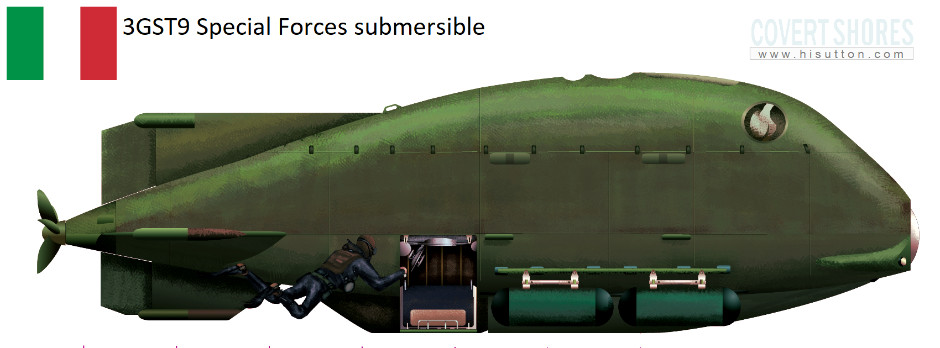
It was still a small submarine, with all the operational and human related limiting factors that implies, but the specification of the boat itself went some way to closing the gap with regular submarines. It was somewhat smaller than the preceding IMI-35 design at just 9.5m (31ft) long and, 2.2m (7f) in beam and displacing just 30 tons. All the same it could transport four frogmen and carry the same external stores as the IMI-35, which were mounted externally on the lower hull. This load could include small 122mm torpedoes with a stated range of 25 km (15 miles) designed for firing at beaches to cause diversions.
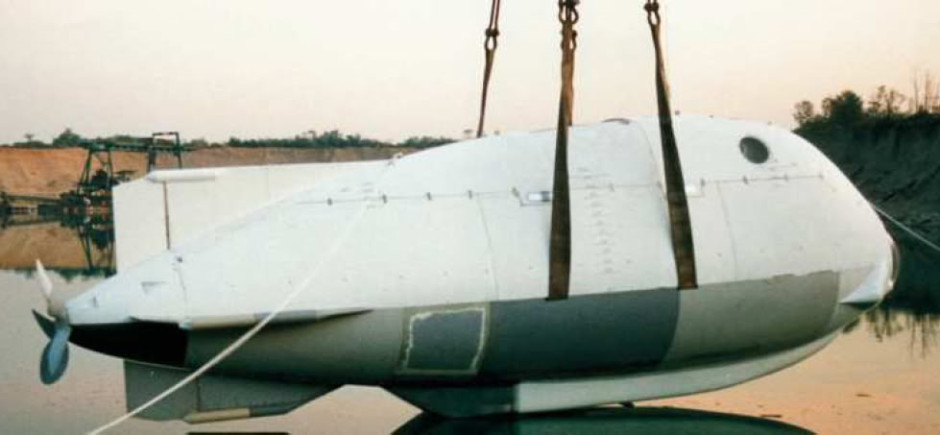
The 3GST9 was the brainchild of a prolific inventor Dr Giunio S Santi who was based in Trieste. In the mid-1970s he’d devised a revolutionary method of building submarines out of pipes rather than sheets of steel. The conventional method for building submarines involved rolling heavy sheets of steel and welding them into cylindrical sections which are then reinforced with internal frames and attached together end-to-end. Even for a small submarine this process requires heavy duty industrial machinery with customized tooling for the specific job, which makes it expensive. Dr. Santi’s stroke of genius was to build the submarine out of regular steel pipes which could be molded on an inexpensive pipe bender into large rings and then welded together to form the submarine. This was known as Gaseous Oxygen Stored in a Toroidal hull (GST), with the gas referring to the contents of the pipe and toroidal being the shape. A toroid is the engineering term for a doughnut shaped object; imagine a length of pipe bent into a circle so that the ends meet seamlessly. This form of manufacturer did present its own problems, such as the worry of corrosion inside the pipes and finding ways to keep any joints in the hull strong enough, but the end result was a construction which wasn’t only cheaper, but also much stronger than the conventional method.
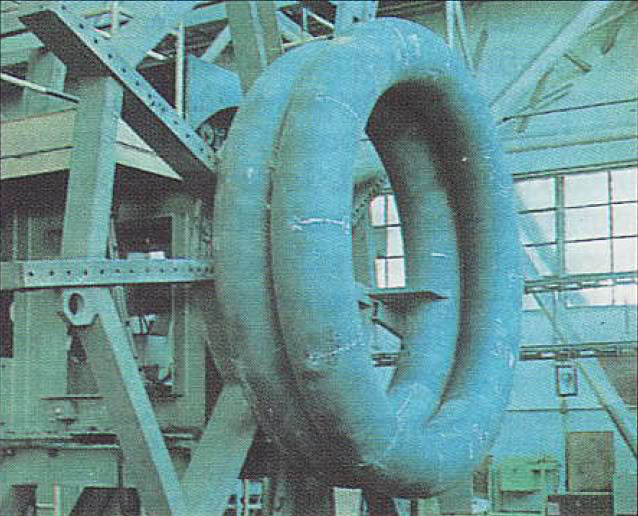
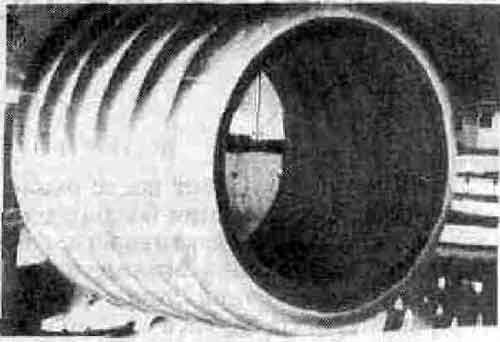
THE book on Special Forces subs Covert Shores 2nd Edition. A world history of naval Special Forces, their missions and their specialist vehicles. SEALs, SBS, COMSUBIN, Sh-13, Spetsnaz, Kampfschwimmers, Commando Hubert, 4RR and many more.
Check it out on Amazon
Another advantage of the tubular construction was that the pipes could be used for storing fuels and gases, which could be used for Air-Independent Power (AIP). Dr Santi had built submarines with tubular construction already (e.g. CEE-22 design), and with AIP (e.g. IMI-35 design). The 3GST9 was the first to combine the two features.
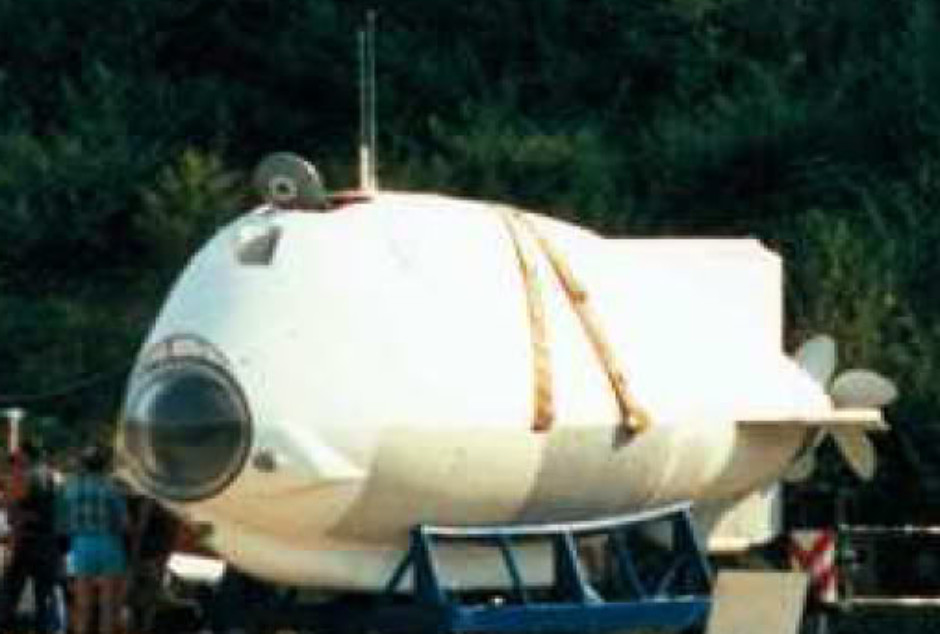
The trick with the closed cycle engine was that the tubular construction could be used to store oxygen for the diesel engine. As the motor used up the oxygen, the exhaust gases were scrubbed and fed back into the empty tubes thus eliminating the need to either take in air from the atmosphere or exhaust gases into the sea. This was a very stealthy arrangement, and the GST construction also contributed further to the acoustic signature. Firstly it acted as an insulation and noise sink from inside the submarine, where anyway machinery was mounted on rubber blocks like in large submarines, and also the fiberglass outer casing it required could be made to act as a sonar absorber. Overall it was a very quiet submarine ideally suited to covert operations conducting reconnaissance, insertion, extraction and sabotage missions.
Specification
Length: 9.5m (31ft)
Beam: 2.2m (7f)
Displacement: 30 tons surfaced
Powerplant: Closed-cycle (AIP) driving 5-blade screw. Battery for back-up and ultra-quite running.
Speed: 8 kt cruise.
Operating depth: 600m (2,000ft)
Endurance : 24 hours @ 8 knots. Combat radius of 80 nm.
Armament: 4 x Mines or 2 x 533mm (21") torpedoes, or 122mm torpedoes
PAX: 4 Combat swimmers.
Payload: 3,000 lb
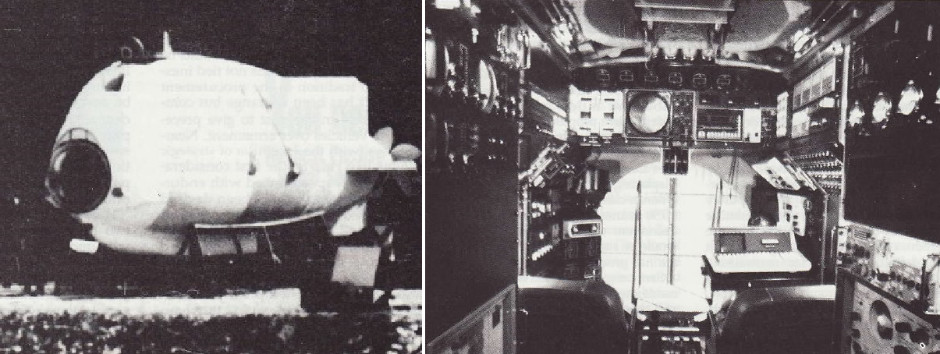
Get The essential guide to World Submarines
This Covert Shores Recognition Guide Covers over 80 classes of submarines including all types currently in service with World Navies.Check it out on Amazon
Related articles (Full index of popular Covert Shores articles)

 Maritalia GST-23+ Midget Submarine
Maritalia GST-23+ Midget Submarine


 USN Navy SEAL's UOES3 (Button 5.60) Dry Combat Submersible (DCS)
USN Navy SEAL's UOES3 (Button 5.60) Dry Combat Submersible (DCS)


 Yugoslav X-Craft (R-3E / 911 Class)
Yugoslav X-Craft (R-3E / 911 Class)

 USS X-1 X-Craft
USS X-1 X-Craft

 Japanese Ko-Hyoteki midget submarine of WW2 - Pearl Harbor attack
Japanese Ko-Hyoteki midget submarine of WW2 - Pearl Harbor attack

 Comex Sagittaire midget submarine
Comex Sagittaire midget submarine

 Soviet Project 1015 'SPLC' Special Purpose midget submarine
Soviet Project 1015 'SPLC' Special Purpose midget submarine

 Iranian Nahang Class midget sub
Iranian Nahang Class midget sub

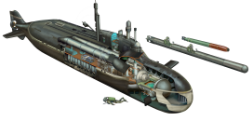 Piranha Class (LOSOS) midget sub. w/Cutaway
Piranha Class (LOSOS) midget sub. w/Cutaway

 Cos.Mo.S Nessie Fast SDV submersible boat
Cos.Mo.S Nessie Fast SDV submersible boat

 Cos.Mo.S CE4F 4-man SDV
Cos.Mo.S CE4F 4-man SDV

 Narwal / Orca Dry Combat Submersible (UWTG)
Narwal / Orca Dry Combat Submersible (UWTG)

 COMSUBIN's submersible boat
COMSUBIN's submersible boat

 Cos.Mo.S CE2F chariot
Cos.Mo.S CE2F chariot




 World survey of Special Operations Craft
World survey of Special Operations Craft



